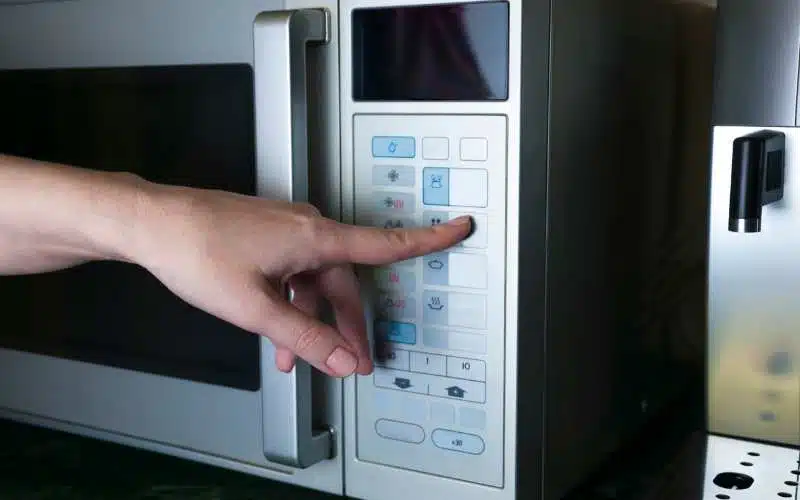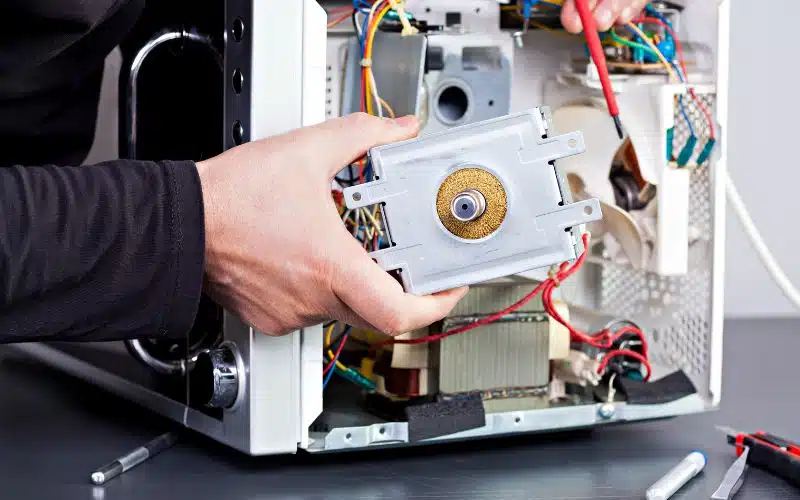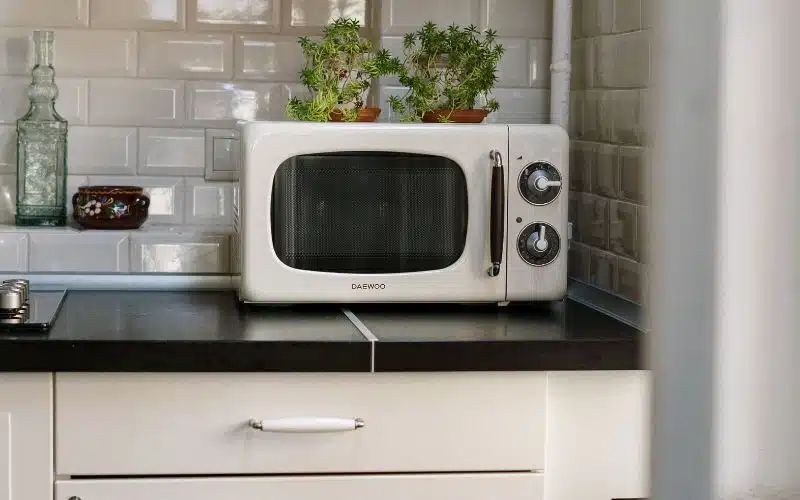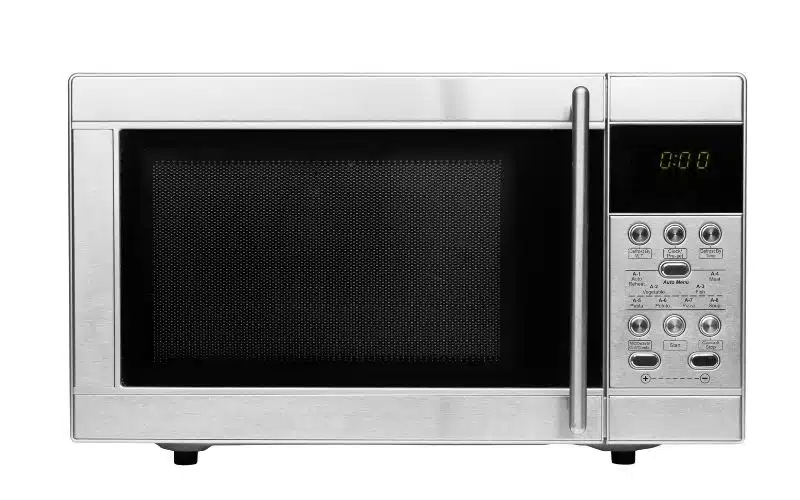Your microwave is like a superhero in the kitchen, but did you know it needs its own protection? That’s where a GFCI, or Ground Fault Circuit Interrupter, comes in.
It’s a special tool that keeps both you and your microwave safe from electrical dangers. Let’s explore why this tiny guardian is so crucial for your microwave!
Key Takeaways
- Use GFCI Outlets: Essential for microwaves near water sources to prevent electric shocks.
- Dedicated Circuit: Necessary for large microwaves to handle their power needs without overloading the system.
- Safety First: Always install microwaves away from moisture-prone areas, regardless of their size.
Should You Plug a Microwave into a GFCI Outlet?
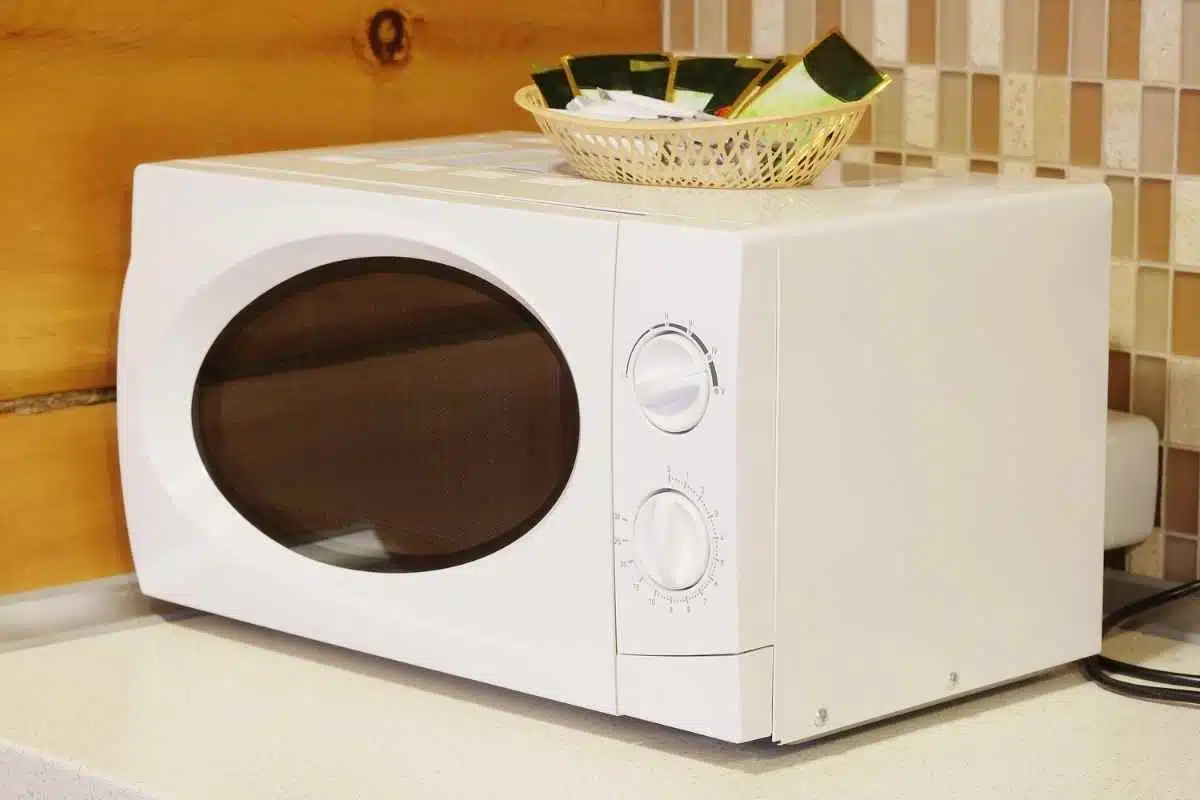
When you put a microwave near water, like by a kitchen sink, it’s really important to have GFCI protection. This keeps you safe from electric shocks.
If you use a microwave outside or close to laundry sinks, you need a GFCI outlet too.
These outlets protect you by blocking electric shocks in places where it’s easy to get shocked.
- GFCI Receptacles: Essential for microwaves near water sources.
- Dedicated Circuit: Protects from electrical power surges.
- Enhanced Safety: Reduces risk of shock, crucial for both users and the appliance.
Even if your microwave isn’t near risky places, GFCI outlets are still good to have. They act like a shield against sudden electrical jumps. It’s a smart idea to use GFCI protection to be extra safe and feel more at ease.
Can I Plug a Microwave into any Outlet?
- Dedicated Circuit: Necessary for large microwaves that demand high electrical power.
- Simple Wall Outlet: Suitable for smaller microwaves, provided they are away from water and dampness.
When you use a big electrical item like a microwave, which needs as much power as a fridge or dishwasher, it should have a dedicated circuit. This makes sure it gets enough electricity without overworking the system.
For smaller microwaves, like ones not much stronger than a toaster, a regular outlet is okay. But remember, always keep them away from wet places to stay safe.
What Kind of Outlet is Needed for a Microwave?
1. Location of use
Before selecting the appropriate outlet for your microwave, consider the location.
Kitchens and areas near water sources require outlets that offer protection from potential moisture-related electrical hazards.
Install a GFCI outlet for your microwave if it’s near a sink or in places prone to dampness.
2. Size of Microwave
The power needs for your microwave depends on its size. Larger microwaves with greater power requirements benefit from an electrical outlet with a dedicated circuit.
This ensures they receive a stable power supply appropriate for their function. For smaller microwaves, a standard outlet may suffice.
Microwave Power Requirements
- Small Microwaves: Standard outlet
- Large Microwaves: Outlet with a dedicated circuit
3. Level of Safety
Ensuring the safest operation of your microwave involves choosing an outlet that offers advanced safety features.
GFCI outlets are recommended for areas with high moisture levels to prevent shock hazards.
Safety Features of GFCI Outlets
- Prevents electric shocks
- Detects and interrupts power surges
- Suitable for kitchens and bathrooms
4. For business or residential use
Identifying whether the microwave is for commercial or residential use will influence the kind of outlet you should install.
Outlets tailored for commercial use are designed to handle microwaves that serve higher demands, while residential outlets are fit for typical home use.
Outlets Based on Microwave Use
- Commercial Microwaves: Commercial-grade outlets
- Residential Microwaves: Home-use outlets
Why Does My Microwave Trip the GFCI?
1. Too many Appliances on one Circuit
Your microwave requires a significant amount of power. If it’s sharing a circuit with other devices, the combined demand may exceed what the circuit can provide.
This strain can cause the GFCI to trip to prevent dangers such as:
- Electrical fires: Excessive demand can overheat wires.
- Circuit failure: Frequent tripping weakens the circuit over time.
- Appliance damage: Unstable power supply can harm electronics.
To avoid these risks, ensure your microwave is on a dedicated circuit that does not supply power to other appliances.
2. Faulty GFCI Outlet
A tripping GFCI could indicate an issue with the outlet itself. Here are steps to verify a GFCI problem:
- Reset the GFCI: If it trips again, there might be an underlying issue.
- Test with another outlet: If the microwave works without tripping, the GFCI could be at fault.
- Professional assessment: Have an electrician evaluate the GFCI outlet for faults.
Remember, a GFCI is meant to protect you from electrical hazards like shock or electrocution, so addressing any issues is crucial.
3. Faulty Microwave
If your microwave trips the GFCI when plugged into different circuits, the appliance itself could be the problem.
Troubleshooting steps include:
- Inspection by a technician: To identify internal faults that could lead to electric shock or fire hazards.
- Replace if necessary: Older or low-quality microwaves might need replacement rather than repair.
Always prioritize safety and efficiency by addressing faults promptly to mitigate risks such as electrical shocks or potential electrical accidents.
Conclusion
Your microwave’s durability and performance hinge on proper electrical safety.
By using a dedicated circuit and a GFCI outlet, you minimize risks and accidents, ensuring the appliance operates optimally.
Avoid shared circuits with other devices, as this can lead to faults and reduced efficiency.
Remember:
- Dedicated circuit: For peak performance.
- GFCI outlets: Reduces accident risks.
- No sharing: Other appliances can cause interference.
